Hair Bonds 101: Understanding and Strengthening Your Hair Bonds
Welcome to Hair Bonds 101, where we delve into everything you need to know about the fundamental structures that keep your hair healthy and vibrant. Understanding hair bonds is crucial for anyone looking to repair hair damage, maintain hair health, and achieve the perfect hair look. Let’s explore the definition and importance of these bonds, how they affect your hair, and the types of bonds that exist.
What Are Hair Bonds?
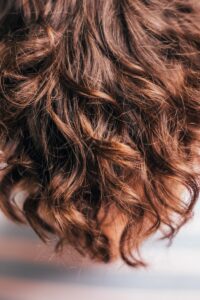
Photo by Paul Siewert on Unsplash
Hair bonds refer to the chemical structures that hold the hair fibers together, ensuring the integrity of each hair strand. These bonds include disulfide bonds, hydrogen bonds, ionic bonds, and salt bonds, each playing a unique role in determining the strength and flexibility of your hair. Understanding the types of hair bonds is essential for effective hair care and is the first step toward healthier hair.
Definition of Hair Bonds
Hair bonds are the various chemical connections that form between the protein molecules in your hair shaft. The most notable types include covalent bonds, which are permanent and strong, and temporary hydrogen and salt bonds, which can be easily broken and reformed. These bonds are crucial for maintaining the overall structure and health of the hair, impacting everything from texture to style.
Importance of Hair Bonds for Hair Health
The health of your hair largely depends on the integrity of its bonds. When these bonds are broken due to environmental factors, chemical treatments, or heat styling, it can lead to damaged hair and increased hair breakage. By strengthening and repairing hair bonds, you can restore your hair’s natural resilience, ensuring it remains vibrant and easy to style. Healthy hair requires a delicate balance of all three types of bonds, contributing to its overall strength.
How Hair Bonds Affect Your Hair Look
The way your hair looks is directly influenced by the state of your hair bonds. Strong, intact bonds result in smooth, shiny hair, while damaged bonds can lead to frizz and an uneven texture. For those with curly hair, the type of bonds present can dictate how well your curls hold their shape. Utilizing targeted hair masks and treatments can help repair hair bonds, giving your hair a break from daily styling stress and enhancing its appearance.
Types of Hair Bonds
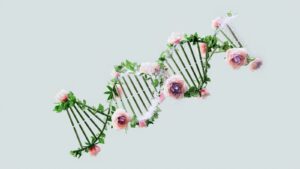
Photo by Google DeepMind on Pexels
Disulfide Bonds: The Backbone of Hair Strength
Disulfide bonds are a type of permanent bond formed between cysteine amino acids in the hair shaft. These strong chemical bonds are essential for maintaining the overall strength and structure of each hair strand. When you style your hair, these bonds play a critical role in determining how well your hair holds its shape and withstands damage. Any disruption to disulfide bonds can lead to weakened hair and increased breakage, emphasizing the importance of proper hair care to maintain healthy hair.
Salt Bonds: Temporary Connections
Salt bonds are temporary connections that can easily be formed and broken, primarily influenced by the pH level of the hair and surrounding environment. These bonds occur between the negatively and positively charged amino acids in the hair fiber. While they provide flexibility and bounce, they are not as strong as disulfide bonds. Understanding the nature of salt bonds is crucial for hair treatments, as they can be easily affected by humidity and styling products. Keeping your hair healthy requires managing these bonds effectively.
Hydrogen Bonds: Quick Reactions and Effects
Hydrogen bonds are another type of temporary bond that significantly impacts the hair’s appearance and texture. These weak bonds form when water molecules interact with the hair shaft, primarily affecting damp hair. They are responsible for the way hair curls or straightens, as they can be easily broken and reformed with heat and moisture. Understanding hydrogen bonds helps you choose the right hair products and treatments that allow you to style your hair effectively while minimizing damage.
Causes of Damaged Hair Bonds
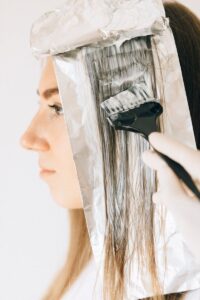
Photo by Nataliya Vaitkevich on Pexels
Common Factors Leading to Broken Hair Bonds
Several common factors can lead to broken hair bonds, resulting in damaged hair. Overexposure to chemical treatments, such as bleaching or perming, can weaken the disulfide bonds in the hair, leading to increased hair breakage. Furthermore, excessive heat from styling tools can compromise the integrity of both hydrogen and salt bonds. Understanding these factors allows you to make informed decisions about your hair care routine, helping you maintain healthier hair and prevent further damage.
Environmental Influences on Hair Damage
Environmental influences, such as UV rays, humidity, and pollution, can significantly damage hair bonds. UV exposure can degrade the protein structure within the hair fiber, weakening disulfide bonds and leading to dull hair color. Additionally, high humidity can disrupt salt and hydrogen bonds, causing frizz and an inconsistent hair look. To combat these factors, consider using protective hair products and treatments that shield your hair from environmental stressors, ultimately preserving its health and strength.
Styling Practices That Harm Hair Bonds
Many styling practices can inadvertently harm your hair bonds, leading to damaged hair. Frequent use of heat styling tools without proper protection can cause irreversible harm to hydrogen and disulfide bonds. Similarly, tight hairstyles can place undue stress on the hair shaft, leading to breakage. It’s essential to adopt gentler styling methods and utilize hair masks and treatments that focus on strengthening and repairing hair bonds, ensuring that you keep your hair healthy and resilient against daily styling challenges.
How to Repair Hair Bonds
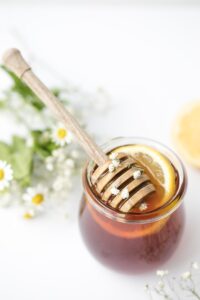
Photo by Heather Barnes on Unsplash
Products Designed to Repair Hair Bonds
To effectively repair hair bonds, several specialized products are available in the market. These hair treatments often contain ingredients specifically formulated to target damaged hair, such as proteins and amino acids that help to restore the integrity of the hair shaft. Products like bond-building hair masks and deep-conditioning treatments are essential for maintaining healthy hair. Regular use of these treatments can significantly strengthen hair bonds, resulting in a healthier and more vibrant hair look.
Home Remedies for Strengthening Hair
For those who prefer natural solutions, home remedies can be incredibly effective in strengthening hair bonds. Ingredients like coconut oil, avocado, and honey are known for their nourishing properties. These natural treatments penetrate the hair fiber, helping to repair hair bonds and improve overall hair health. Incorporating these remedies into your hair care routine can give your hair a break from harsh chemicals while promoting long-lasting strength and shine.
Professional Treatments for Damaged Hair
Seeking professional treatments can be a game-changer for repairing severely damaged hair bonds. Salon treatments such as keratin smoothing or bond-building services are designed to target the three types of bonds in your hair. These professional procedures not only repair hair but also provide a protective layer to prevent future damage. Investing in these treatments can help you achieve healthier hair and restore your hair’s natural strength and beauty.
Strengthening Hair Bonds
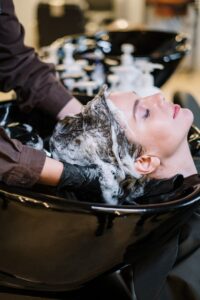
Photo by cottonbro studio on Pexels
Daily Practices to Maintain Hair Health
Maintaining healthy hair requires consistent daily practices that focus on strengthening hair bonds. Implementing a gentle hair care routine, including using sulfate-free shampoos and moisturizing conditioners, can significantly reduce hair damage. Additionally, minimizing the use of heat styling tools and opting for protective hairstyles will help keep your hair healthy. These practices are essential for preserving hair strength and preventing breakage, ensuring your hair remains resilient and vibrant.
Nutrition’s Role in Strengthening Hair
The nutrition you provide your body plays a critical role in strengthening hair bonds. Consuming a balanced diet rich in vitamins, minerals, and proteins can enhance hair health from within. Nutrients such as biotin, omega-3 fatty acids, and vitamins A and E are particularly beneficial for maintaining the strength of hair fibers. By focusing on nutrition, you can support the repair of damaged hair and promote the growth of healthier hair strands.
Long-Term Strategies for Healthy Hair Maintenance
To ensure long-term healthy hair maintenance, it is crucial to develop strategies that strengthen and protect hair bonds. Regular trims can prevent split ends and minimize hair breakage, while protective hairstyles can shield hair from environmental damage. Additionally, establishing a consistent hair care regime that includes deep conditioning and occasional professional treatments can help maintain the integrity of your hair bonds. By adopting these strategies, you can achieve and retain beautiful, healthy hair over time.
Frequently Asked Questions (FAQs) About Hair Care
What are the different types of hair bonds?
Understanding the types of bonds in your hair is crucial for maintaining healthy hair. There are three main types of bonds that play a significant role in the structure and strength of your hair: disulfide bonds, which are permanent bonds that provide strength; hydrogen bonds, which are temporary and can be broken by water; and ionic bonds, which help with the overall structure. Each of these types of hair bonds contributes to the overall health and hair strength of your hair, and understanding them can help you make better choices in your hair care routine.
How can I repair damaged hair?
If you’re struggling with damaged hair, there are several effective strategies you can employ. Start by using a deep conditioning hair mask that focuses on repairing hair bonds. Look for products that contain ingredients specifically designed to strengthen and repair hair bonds, such as keratin or argan oil. Additionally, minimize the use of chemical treatments that can further damage your hair. Regular trims can also prevent split ends, which can exacerbate hair damage. Finally, always ensure your hair is damp hair before applying any treatments for better absorption.
What are the best practices for hair care?
To maintain healthy hair, adopt a comprehensive hair care routine that includes regular washing with a gentle shampoo, conditioning, and using hair products that suit your specific hair type. Incorporate a weekly hair mask to provide extra moisture and nourishment. Remember to protect your hair from heat damage by using heat protectants when styling. Additionally, consider the use of silk pillowcases to reduce friction on your hair strands while you sleep. These small changes can significantly improve your hair health.
How do chemical treatments affect hair bonds?
Chemical treatments can significantly affect the hair’s structural integrity by altering the bonds that hold the hair fibers together. The primary bonds in hair are disulfide bonds, hydrogen bonds, and salt bridges. Here’s how various chemical treatments impact these bonds:
1. **Hair Relaxers and Perms**: These treatments involve breaking disulfide bonds in the hair’s keratin structure. In the case of perms, the hair is curled by applying a reducing agent that breaks these bonds, allowing the hair to be reshaped. Afterward, a neutralizer is applied to reform the disulfide bonds in the new shape. While this process can create desired styles, it can also weaken the hair, making it more susceptible to damage and breakage if not done properly.
2. **Bleaching**: Bleaching agents work by penetrating the hair shaft and breaking down the melanin (natural pigment) in the hair. This process also affects the disulfide bonds, which can lead to increased porosity and dryness. Over-bleached hair often becomes brittle and prone to breakage due to the loss of structural integrity.
3. **Coloring**: Permanent hair dyes typically contain ammonia and peroxide, which can alter the hair’s pH and open the cuticle layer. This allows the dye to penetrate and interact with the hair’s keratin structure. While the color change can be beautiful, it may also weaken hair bonds, especially if the hair is already compromised or if the dye is applied frequently.
4. **Keratin Treatments**: These treatments aim to restore and strengthen the hair by infusing it with keratin, a protein that is a key component of hair structure. While they can temporarily improve the hair’s texture and reduce frizz, some keratin treatments contain formaldehyde or similar chemicals that can also weaken hair bonds over time.
5. **pH Levels**: Many chemical treatments alter the pH of the hair. A lower pH can help close the cuticle, which may temporarily improve the appearance of the hair. However, repeated exposure to harsh chemicals can lead to cumulative damage, affecting the overall health and resilience of the hair.
In summary, while chemical treatments can provide various aesthetic benefits, they can also compromise the hair’s structural bonds if not used carefully. It is essential to follow up with appropriate hair care routines, including moisturizing and protein treatments, to mitigate damage and maintain hair health.

